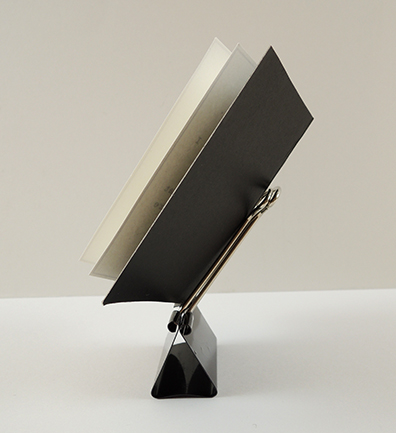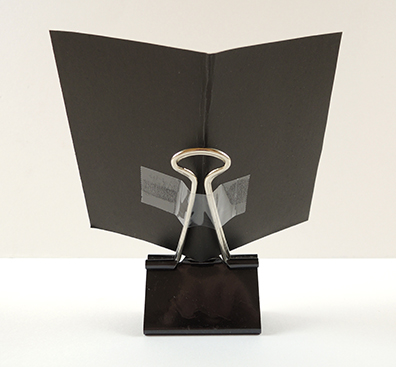 Folks, it was a total story time PARTY! Recently, we had the honor of collaborating with the Princeton Public Library and jaZams to bring the tremendous Betsy Bird and the terrific Andrea Tsurumi to Princeton with their new book Pop! Goes the Nursery Rhyme.
Folks, it was a total story time PARTY! Recently, we had the honor of collaborating with the Princeton Public Library and jaZams to bring the tremendous Betsy Bird and the terrific Andrea Tsurumi to Princeton with their new book Pop! Goes the Nursery Rhyme.
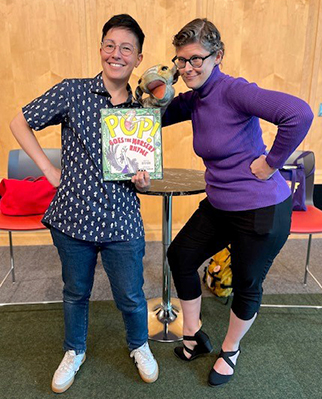
We all know Betsy Bird – author, librarian, Fuse #8 blogger for School Library Journal. Betsy has served on Newbery, reviewed for Kirkus, and written for Horn Book. She interviewed me way back in 2015, and again in 2022. And folks, I can personally attest that Betsy Bird serves up a mean round of “Head, Shoulders, Knees and Toes” for the young ones.
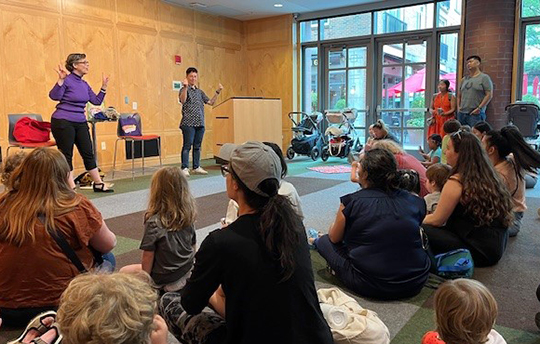
Joining Betsy was the extraordinarily talented Andrea Tsurumi. An author and illustrator, they hail from Philadelphia and have written and illustrated the picture books Accident!, Crab Cake, and I’m On It! as well as collaborated with a number of children’s book authors. I also learned that Andrea will personally draw any animal with a slice of pizza, which is how I scored this amazing serval illustration.
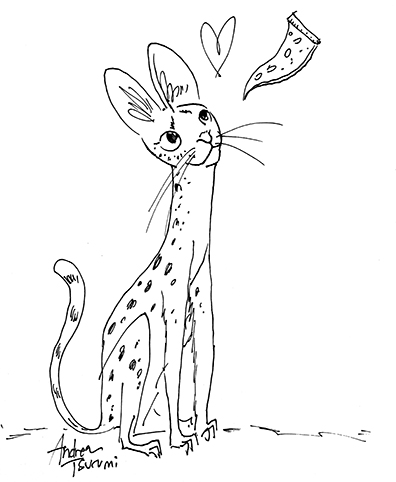 Pop! Goes the Nursery Rhyme (Union Square Kids, 2025) begins as a nursery rhyme book, but things goes quickly off the rails as a highly bombastic Weasel interrupts absolutely EVERY rhyme, much to the chagrin of the story’s narrator, a harried Secretary Bird. Kids get both the benefit of classic rhymes and the hilarious irreverence of the Weasel. It’s a wonderful and charming read-aloud, and Andrea’s jubilant and evocative illustrations build anticipation for every page turn. Our audience loved it!
Pop! Goes the Nursery Rhyme (Union Square Kids, 2025) begins as a nursery rhyme book, but things goes quickly off the rails as a highly bombastic Weasel interrupts absolutely EVERY rhyme, much to the chagrin of the story’s narrator, a harried Secretary Bird. Kids get both the benefit of classic rhymes and the hilarious irreverence of the Weasel. It’s a wonderful and charming read-aloud, and Andrea’s jubilant and evocative illustrations build anticipation for every page turn. Our audience loved it!
Did I mention that Betsy Bird brought her own bird? Yes, she brought a custom Secretary Bird puppet who expertly mingled with kids after the story time.
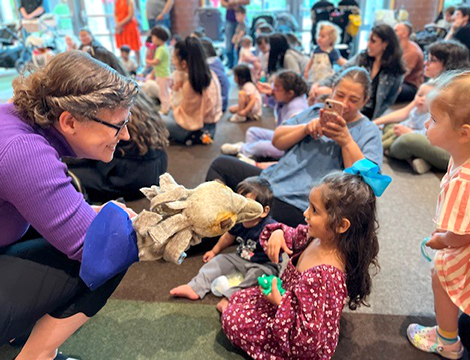 Andrea also circulated the crowds with their sketch book, showing kids what original sketches look like, and answering questions.
Andrea also circulated the crowds with their sketch book, showing kids what original sketches look like, and answering questions.
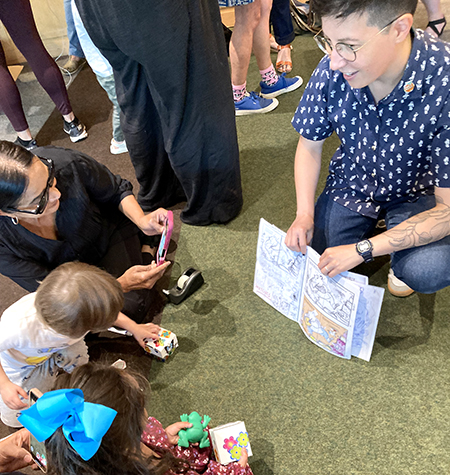 My portion of the program was the craft project, which of course had to be an enthusiastic weasel popping out of a decorated box!
My portion of the program was the craft project, which of course had to be an enthusiastic weasel popping out of a decorated box!
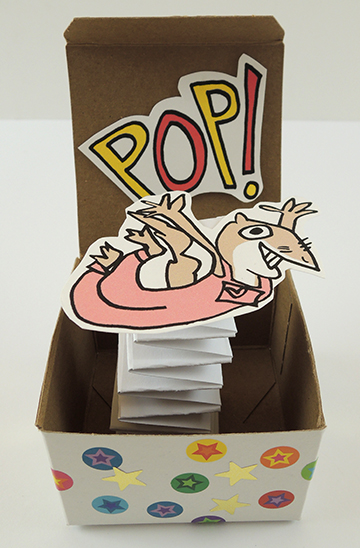
The craft was designed to serve large crowds with limited table space, so we offered a selection of stickers, a 3″ x 3″ x 2″ box, a pop word template and a weasel template printed on card stock. A poster board spring (exactly like the one Katie demonstrates here) attaches to the inside of the box with tape. Quick note: use 22″ strips of cardboard to create the appropriate length spring.
Kids were happy to grab markers and supplies and get to work on their boxes!
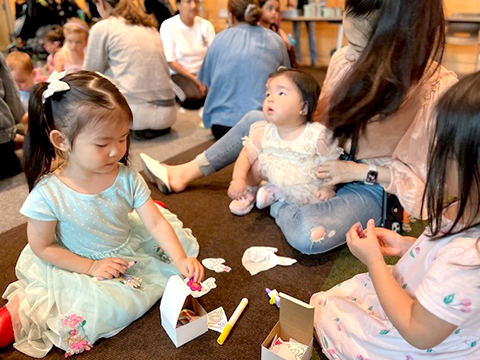 Families were also welcome to bring a little literacy love home, and acquire copies of the book for Betsy and Andrea to sign.That portion of the event was sponsored by jaZams, our independent, locally owned, and family run toy store. We love you jaZams!
Families were also welcome to bring a little literacy love home, and acquire copies of the book for Betsy and Andrea to sign.That portion of the event was sponsored by jaZams, our independent, locally owned, and family run toy store. We love you jaZams!
I would like to thank everyone who made this event possible! To Betsy and Andrea for bringing such a wonderful book to our community. To Marissa Warren, Director of Youth Services at the Princeton Public Library for opening the doors of the Community Room for all to enjoy. And to Joanne Farrugia, owner of JaZams, for providing books for everyone to experience again and again!
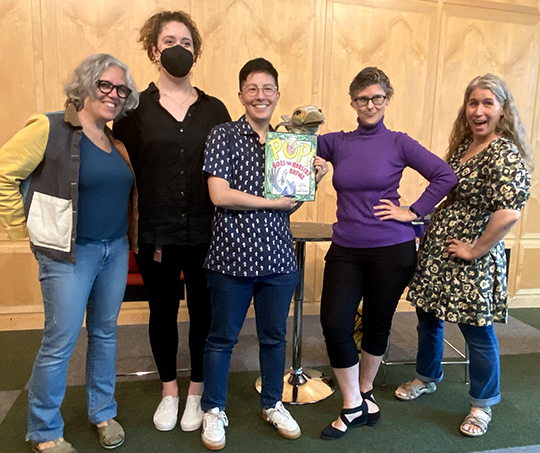
From left to right: Joanne Farrugia, Marissa Warren, Andrea Tsurami, Betsy Bird, Dana Sheridan
Images courtesy of the Betsy Bird, Cotsen Children’s Library, and Princeton Public Library. Book cover image provided by Andrea Tsurumi.

 Why experience all the fuss and muss of travel when you can have just as much fun at home? And with our super-cozy snail house, you’ll be residing in style and comfort!
Why experience all the fuss and muss of travel when you can have just as much fun at home? And with our super-cozy snail house, you’ll be residing in style and comfort!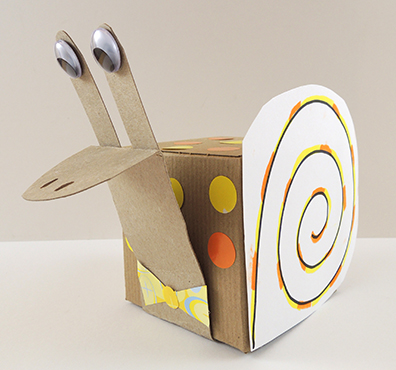
 Swing the shell outward, and the cozy interior of your home is revealed. Use construction paper and markers to decorate the interior and put up some artwork. We went for extra cozy with patterned paper, felt carpets, fabric leaf throw rugs, and an easy chair made out of a paper water cup. There’s even a little book to read!
Swing the shell outward, and the cozy interior of your home is revealed. Use construction paper and markers to decorate the interior and put up some artwork. We went for extra cozy with patterned paper, felt carpets, fabric leaf throw rugs, and an easy chair made out of a paper water cup. There’s even a little book to read! Perhaps our simplest project yet, this little table card codex doubles as an immediate ice breaker at any party, gala, program, or reception! Just pop it by your place setting, and let the other guests read your (abbreviated) autobiography!
Perhaps our simplest project yet, this little table card codex doubles as an immediate ice breaker at any party, gala, program, or reception! Just pop it by your place setting, and let the other guests read your (abbreviated) autobiography!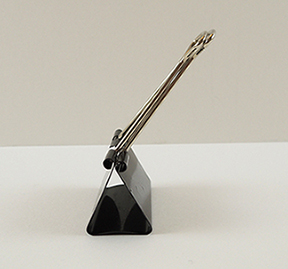 Place the book on top of the base, leaning the spine back on the silver handles. Done!
Place the book on top of the base, leaning the spine back on the silver handles. Done!